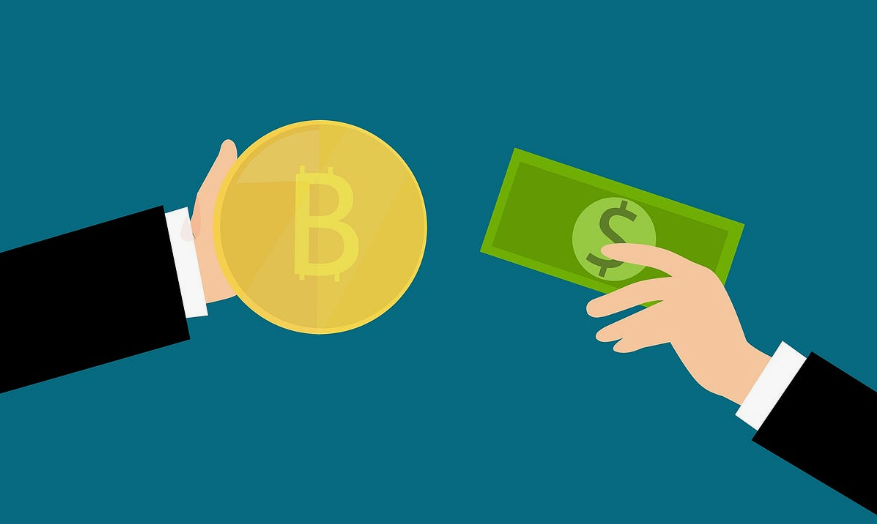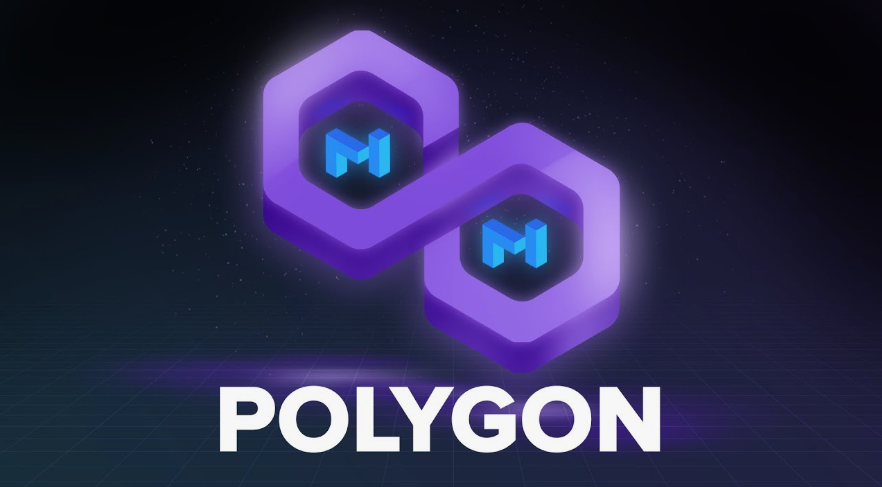How to Buy Altcoins for Beginners Complete 2025 Guide Safe and Easy Steps

Are you ready to dive into the exciting world of cryptocurrency beyond Bitcoin? Learning how to buy altcoins for beginners can seem overwhelming, but with the right guidance, you can start your crypto journey safely and confidently. Altcoins, or alternative cryptocurrencies, represent thousands of digital assets that offer unique features and investment opportunities different from Bitcoin.
This comprehensive guide will walk you through everything you need to know about purchasing altcoins as a complete beginner. From understanding what altcoins are to setting up your first crypto wallet and making your initial purchase, we’ll cover each step in detail. Whether you’re interested in Ethereum, Cardano, Solana, or any other alternative cryptocurrency, this guide provides the foundation you need to start investing responsibly.
The cryptocurrency market has evolved significantly, making it easier than ever for newcomers to participate. However, with great opportunity comes great responsibility. Understanding how to buy altcoins for beginners involves more than just knowing where to click “buy”—it requires knowledge of security practices, market dynamics, and investment strategies that can help protect your capital while maximising your potential returns.
Understanding Altcoins: What Every Beginner Should Know
Before diving into the purchasing process, it’s crucial to understand what altcoins are and why they exist. Altcoins are any cryptocurrencies other than Bitcoin, encompassing thousands of different digital assets, each with unique features, use cases, and technological innovations.
The term “altcoin” originally stood for “alternative coin,” highlighting these cryptocurrencies as alternatives to Bitcoin. Today, the altcoin market represents a diverse ecosystem of projects ranging from smart contract platforms like Ethereum to privacy-focused coins like Monero and utility tokens that power decentralised applications.
Popular altcoins include Ethereum (ETH), which pioneered smart contracts; Cardano (ADA), known for its research-driven approach; Solana (SOL), praised for its high-speed transactions; and Polygon (MATIC), which focuses on scaling solutions. Each altcoin serves different purposes and targets specific market needs.
Understanding market capitalisation is essential when evaluating altcoins. Market cap represents the total value of all coins in circulation and helps determine an altcoin’s relative size and stability. Large-cap altcoins like Ethereum tend to be more stable but offer lower growth potential, while small-cap altcoins may provide higher returns but come with increased volatility and risk.
Essential Requirements Before You Start
Setting Up Your Digital Foundation
Before learning how to buy altcoins for beginners, you need to establish the necessary digital infrastructure. This includes having a reliable internet connection, a secure device, and proper identification documents for account verification.
Most reputable cryptocurrency exchanges require identity verification through a Know Your Customer (KYC) process. Prepare government-issued identification, proof of address, and sometimes additional documentation depending on your country’s regulations. This verification process typically takes 24-48 hours but can extend longer during high-demand periods.
Consider your device security seriously. Use updated antivirus software, enable two-factor authentication on all accounts, and avoid using public Wi-Fi for cryptocurrency transactions. Your device becomes the gateway to your digital assets, making security paramount.
Financial Preparation and Risk Management
Cryptocurrency investing requires careful financial planning. Never invest more than you can afford to lose, as the altcoin market is highly volatile and unpredictable. Establish a clear investment budget separate from your emergency fund and essential expenses.
Research different investment strategies before making purchases. Dollar-cost averaging involves making regular, smaller purchases over time to reduce the impact of market volatility. Lump-sum investing means making larger, one-time purchases when you believe the market is favourable.
Consider your risk tolerance and investment timeline. Altcoins can experience significant price swings, sometimes losing 50-90% of their value during market downturns. However, they can also provide substantial returns during bull markets. Understanding your comfort level with these fluctuations is crucial for long-term success.
Choosing the Right Cryptocurrency Exchange

Centralized vs. Decentralized Exchanges
When exploring how to buy altcoins for beginners, choosing the right exchange is fundamental. Centralised exchanges (CEXs) like Binance, Coinbase, and Kraken offer user-friendly interfaces, customer support, and regulatory compliance, but require users to trust the platform with their funds.
Decentralised exchanges (DEXs) like Uniswap, SushiSwap, and PancakeSwap operate without a central authority, giving users complete control over their funds. However, DEXs typically require more technical knowledge and may have higher transaction fees, making them less suitable for beginners.
For newcomers, centralised exchanges usually provide the best starting point due to their intuitive interfaces, educational resources, and customer support. As you gain experience, you can explore decentralized options for greater privacy and control.
Key Factors to Consider
Security should be your top priority when selecting an exchange. Look for platforms with strong security measures, including cold storage for user funds, two-factor authentication, and insurance coverage for digital assets. Research the exchange’s history for any security breaches or regulatory issues.
The fee structure significantly impacts your investment returns. Exchanges charge various fees, including trading fees, withdrawal fees, and deposit fees. Some platforms offer reduced fees for users who hold their native tokens or meet certain trading volume thresholds.
Available altcoins vary between exchanges. While major platforms list hundreds of cryptocurrencies, smaller exchanges may have limited selections. Ensure your chosen exchange supports the specific altcoins you want to purchase.
User interface and experience matter, especially for beginners. Look for exchanges with clear navigation, educational resources, and responsive customer support. Many platforms offer demo accounts or paper trading features to practice without risking real money.
Step-by-Step Guide: How to Buy Altcoins for Beginners
Account Creation and Verification
Start by visiting your chosen exchange’s official website. Be cautious of phishing sites by double-checking the URL and using official links. Create an account using a strong, unique password and enable two-factor authentication immediately.
Complete the identity verification process by uploading the required documents. This typically includes a government-issued ID, proof of address, and sometimes a selfie for facial verification. The verification process ensures regulatory compliance and adds security to your account.
While waiting for verification approval, familiarise yourself with the exchange’s interface. Most platforms offer tutorials, demo accounts, or educational materials to help beginners understand the trading process.
Funding Your Account
Once verified, you can fund your account using various methods. Bank transfers typically offer the lowest fees but may take several business days to process. Credit and debit cards provide instant funding but usually come with higher fees ranging from 3 to 5%.
Some exchanges accept alternative payment methods like PayPal, wire transfers, or even cryptocurrency deposits from other wallets. Consider the fees, processing times, and availability in your region when choosing a funding method.
Always start with small amounts while learning the process. This approach minimizes risk while you become comfortable with the platform and procedures.
Making Your First Altcoin Purchase
Navigate to the trading section of your exchange and select the altcoin you want to purchase. Most beginners should start with the “Buy” or “Simple Trade” interface rather than advanced trading features.
Choose between market orders (buy immediately at the current price) or limit orders (buy when the price reaches a specific level). Market orders provide instant execution but may result in slight price variations during volatile periods.
Enter the amount you want to purchase, either in fiat currency (USD, EUR) or cryptocurrency quantity. Review the transaction details, including fees, expected quantity, and total cost, before confirming your purchase.
After completing the purchase, verify that the altcoins appear in your exchange wallet. Some transactions may take several minutes to process, especially during periods of high network activity.
Security Best Practices for Altcoin Storage
Understanding Cryptocurrency Wallets
Learning how to buy altcoins for beginners extends beyond purchasing to proper storage and security. Cryptocurrency wallets store your private keys, which provide access to your digital assets. There are two main types: hot wallets (connected to the internet) and cold wallets (offline storage).
Hot wallets include mobile apps, desktop software, and web-based wallets. They offer convenience for frequent trading but are more vulnerable to hacking and online threats. Popular hot wallets include MetaMask, Trust Wallet, and exchange-integrated wallets.
Cold wallets, such as hardware wallets like Ledger or Trezor, provide superior security by keeping your private keys offline. They’re ideal for long-term storage but less convenient for frequent trading.
Setting Up a Secure Wallet
Choose a reputable wallet provider with strong security features and active development. Research the wallet’s history, security audits, and user reviews before making a decision.
During setup, you’ll receive a recovery phrase (seed phrase) consisting of 12-24 words. This phrase can restore your wallet if you lose access to your device. Write it down on paper and store it in a secure location. Never share your recovery phrase or store it digitally.
Enable all available security features, including PIN codes, biometric authentication, and transaction confirmations. Regular software updates ensure you have the latest security patches and features.
Transferring Altcoins to Your Wallet
Once you’ve purchased altcoins on an exchange, consider transferring them to your wallet for enhanced security. This process involves copying your wallet’s receiving address and initiating a withdrawal from the exchange.
Always double-check the receiving address before confirming the transfer. Cryptocurrency transactions are irreversible, and sending to the wrong address typically results in permanent loss of funds.
Start with small test transactions to ensure everything works correctly before transferring larger amounts. This practice helps avoid costly mistakes and builds confidence in the process.
Popular Altcoins for Beginners
Ethereum (ETH): The Smart Contract Pioneer
Ethereum stands as the most prominent altcoin, introducing smart contracts that enable decentralised applications (dApps) and decentralised finance (DeFi) protocols. Its established ecosystem, developer community, and institutional adoption make it an attractive option for beginners.
The Ethereum network hosts thousands of other cryptocurrencies and applications, creating a vast ecosystem of innovation. Understanding Ethereum provides insight into much of the broader cryptocurrency space.
Recent upgrades to Ethereum 2.0 have improved energy efficiency and scalability, addressing previous concerns about environmental impact and transaction costs.
Cardano (ADA): The Research-Driven Platform
Cardano takes a scientific approach to blockchain development, with peer-reviewed research backing its technological decisions. This methodical approach appeals to investors seeking long-term stability and innovation.
The platform focuses on sustainability, scalability, and interoperability, addressing key challenges facing older blockchain networks. Its proof-of-stake consensus mechanism consumes significantly less energy than proof-of-work alternatives.
Cardano’s gradual rollout of features through named updates (Alonzo, Vasil, etc.) provides a clear roadmap for development and adoption.
Solana (SOL): High-Speed Transactions
Solana has gained attention for its high throughput and low transaction costs, making it popular for decentralised applications and non-fungible tokens (NFTs). Its technical architecture enables thousands of transactions per second.
The growing ecosystem of applications built on Solana includes DeFi protocols, NFT marketplaces, and gaming platforms. This diverse usage drives demand for SOL tokens.
However, Solana has experienced network outages and technical challenges, highlighting the importance of diversification in cryptocurrency investments.
Polygon (MATIC): Ethereum Scaling Solution
Polygon serves as a scaling solution for Ethereum, offering faster and cheaper transactions while maintaining compatibility with the Ethereum ecosystem. This positioning makes it valuable as Ethereum adoption continues to grow.

Major companies and applications use Polygon to reduce transaction costs and improve user experience. This real-world adoption provides fundamental value beyond speculation.
The network’s focus on developer experience and ecosystem growth has attracted numerous projects and partnerships, creating a vibrant community.
Investment Strategies for Altcoin Beginners
Dollar-Cost Averaging (DCA)
Dollar-cost averaging involves making regular, fixed-amount purchases regardless of market conditions. This strategy reduces the impact of volatility by spreading purchases over time, potentially lowering your average purchase price.
Set up automatic purchases on a schedule that fits your budget, such as weekly or monthly. Many exchanges offer automated DCA features that execute purchases automatically.
DCA works particularly well for beginners because it removes emotional decision-making from the investment process and encourages consistent, disciplined investing.
Portfolio Diversification
Avoid putting all your funds into a single altcoin. Diversification across multiple cryptocurrencies, market caps, and use cases can reduce risk and improve potential returns.
Consider allocating different percentages to various risk levels: larger allocations to established altcoins like Ethereum, moderate amounts to mid-cap projects, and smaller portions to high-risk, high-reward opportunities.
Regular portfolio rebalancing ensures your allocation stays aligned with your risk tolerance and investment goals. This might involve selling overperforming assets and buying underperforming ones.
Long-Term vs. Short-Term Approaches
Long-term holding (HODLing) involves buying altcoins and holding them for extended periods, often years. This strategy requires patience but can be rewarding if you choose projects with strong fundamentals.
Short-term trading attempts to profit from price fluctuations over days, weeks, or months. While potentially more profitable, it requires more time, knowledge, and emotional discipline.
Most beginners should focus on long-term strategies while learning about the market. As knowledge and experience grow, you can explore more active trading approaches.
Common Mistakes to Avoid
Emotional Trading Decisions
Fear of missing out (FOMO) often leads to buying at market peaks, while fear, uncertainty, and doubt (FUD) can cause selling at market bottoms. Develop a clear investment plan and stick to it regardless of market emotions.
Avoid checking prices constantly, as this can lead to impulsive decisions based on short-term fluctuations. Set specific times for portfolio reviews and stick to your schedule.
Social media and online forums can amplify emotions and spread misinformation. Verify information from multiple sources before making investment decisions.
Ignoring Security Practices
Many beginners underestimate security risks until they experience losses. Implement strong security practices from the beginning, including secure passwords, two-factor authentication, and safe storage of recovery phrases.
Be cautious of phishing attempts, fake websites, and social engineering attacks. Always verify URLs and never share private keys or recovery phrases with anyone.
Regular security audits of your accounts and wallets help identify potential vulnerabilities before they become problems.
Regulatory Considerations and Tax Implications
Understanding Legal Requirements
Cryptocurrency regulations vary significantly between countries and continue evolving. Research your local laws regarding cryptocurrency ownership, trading, and taxation.
Some jurisdictions require registration or licensing for cryptocurrency activities, while others have restrictions on certain types of transactions. Staying informed helps ensure compliance.
Regulatory changes can impact altcoin prices and availability. Monitor relevant news and adjust your strategy accordingly.
Tax Reporting and Record Keeping
Most countries treat cryptocurrency transactions as taxable events. Buying altcoins with fiat currency may not be immediately taxable, but selling, trading, or using them typically creates tax obligations.
Maintain detailed records including transaction dates, amounts, prices, and purposes. This information is essential for accurate tax reporting and audit preparation.
Consider using cryptocurrency tax software to automate calculations and reporting. These tools can import transaction data from exchanges and generate necessary tax forms.
Advanced Tips for Growing Your Altcoin Portfolio
Staking and Yield Farming
Many altcoins offer staking rewards, allowing you to earn additional tokens by holding and “staking” your coins to support network operations. Staking provides passive income while maintaining ownership of your altcoins.
Yield farming involves providing liquidity to decentralized finance protocols in exchange for rewards. While potentially lucrative, it involves additional risks including smart contract vulnerabilities and impermanent loss.
Research staking requirements, reward rates, and lock-up periods before participating. Some staking arrangements require coins to be locked for specific periods.
Following Market Trends and Analysis
Technical analysis involves studying price charts and patterns to predict future movements. While not foolproof, it can provide insights into potential entry and exit points.
Fundamental analysis focuses on project basics including technology, team, partnerships, and market potential. This approach helps identify undervalued projects with long-term potential.
Stay informed about industry news, regulatory developments, and technological advances. These factors can significantly impact altcoin prices and adoption.
Building a Learning Network
Join cryptocurrency communities, forums, and social media groups to learn from experienced investors. However, maintain critical thinking and verify information independently.
Attend cryptocurrency conferences, webinars, and educational events to stay current with industry developments and network with other investors.
Consider following reputable cryptocurrency analysts and educators, but remember that no one can predict market movements with certainty.
Conclusion
Learning how to buy altcoins for beginners opens the door to an exciting and potentially rewarding investment opportunity. The cryptocurrency market offers tremendous potential for those willing to educate themselves and approach it with proper preparation and risk management.
Remember that successful altcoin investing requires patience, continuous learning, and disciplined decision-making. Start small, focus on established projects, and gradually expand your knowledge and portfolio as you gain experience.
The key to mastering how to buy altcoins for beginners lies in taking action while maintaining a cautious and informed approach. Begin with a reputable exchange, secure your investments properly, and never invest more than you can afford to lose.
Ready to start your altcoin journey? Choose a trusted exchange, complete the verification process, and make your first small purchase today. The world of cryptocurrency awaits, and with the knowledge from this guide, you’re well-equipped to navigate it successfully.
FAQs
What’s the minimum amount needed to start buying altcoins?
Most exchanges have low minimum purchase amounts, often as little as $10-25. However, transaction fees may make very small purchases inefficient. Starting with $100-500 allows for meaningful investments while managing fees effectively.
Are altcoins safer than Bitcoin?
Safety depends on various factors including market maturity, adoption, and development activity. Bitcoin is generally considered more stable due to its established position, while altcoins may offer higher growth potential but with increased volatility and risk.
How long should I hold altcoins?
Holding periods depend on your investment strategy and goals. Long-term holding (1-5+ years) suits those believing in cryptocurrency’s future, while shorter periods work for traders seeking quick profits. Most beginners benefit from longer-term approaches.
Can I lose all my money investing in altcoins?
Yes, altcoins can lose significant value or become worthless. This risk emphasizes the importance of only investing what you can afford to lose and diversifying across multiple assets and asset classes.
Which altcoins are best for beginners?
Established altcoins like Ethereum, Cardano, and Solana are often recommended for beginners due to their larger market caps, active development, and strong communities. However, thorough research is essential before investing in any cryptocurrency.
